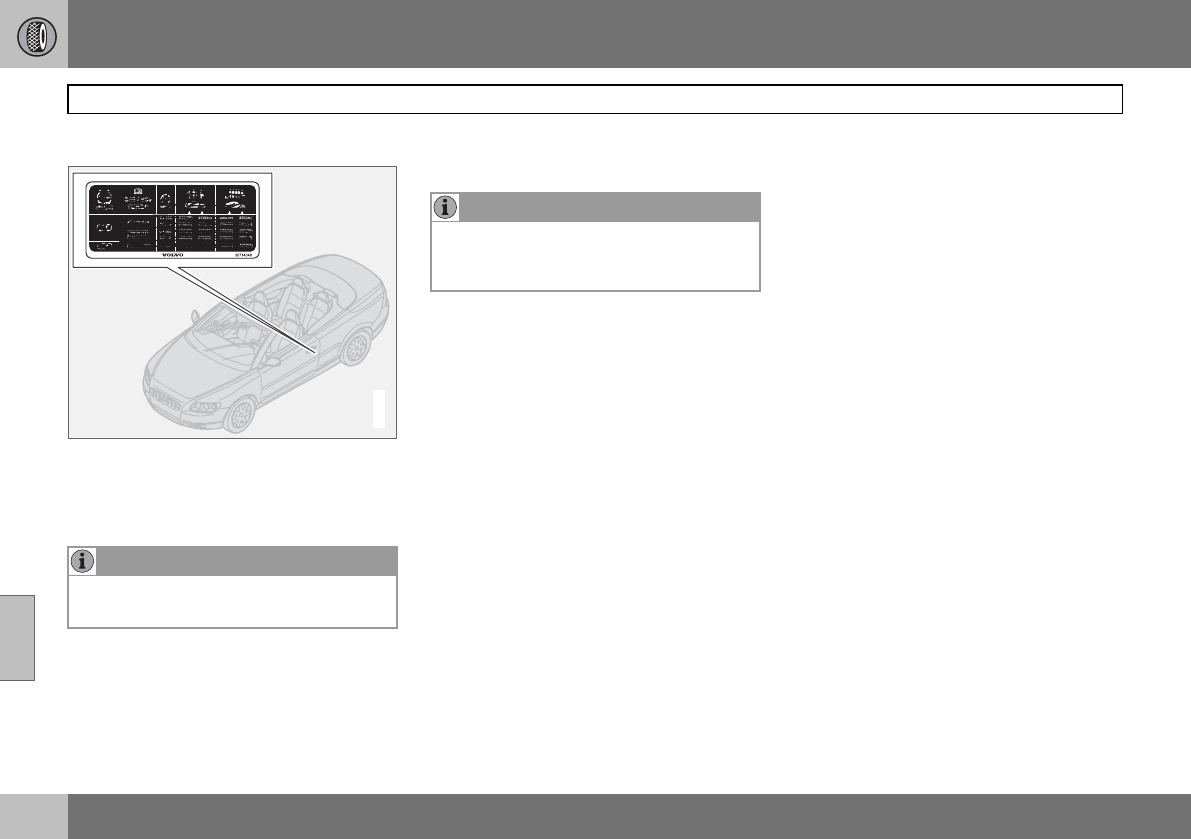
07 Wheels and tyres
158
Tyre pressure
07
Recommended tyre pressure
The tyre pressure label on the driver’s side
door pillar shows which pressures the tyres
should have at different loads and speed
conditions.
Stated on the decal:
• Tyre pressure for the car’s recommended
wheel size
• ECO pressure
• Spare wheel pressure (Temporary Spare).
Checking the tyre pressure
Check the tyre pressure regularly.
Even after several kilometres of driving the
tyres warm up and the pressure increases, so
air must not be released if the pressure is
checked when the tyres are warm, while the
pressure must be increased if it is too low.
Inadequately inflated tyres increase fuel con-
sumption, shorten tyre lifespan and impair
the car’s roadholding. Driving on tyres with
tyre pressure that is too low could also result
in the tyres overheating and disintegrating.
For information on the correct tyre pressure,
refer to the tyre pressure table on page 159.
The specified tyre pressures refer to "cold
tyres". ("Cold tyres" means the tyres are the
same temperature as the ambient tempera-
ture.)
Fuel economy, ECO pressure
At speeds under 160 km/h, the general tyre
pressure for full load is recommended in
order to obtain optimum fuel economy.
Tyre pressure affects travelling comfort, road
noise and steering characteristics.
NOTE
Full load in the car equates to the number of
seats with seatbelts.
G020955
NOTE
Tyre pressure decreases over time, this is a
natural phenomenon. Tyre pressure also
varies depending on ambient temperature.


















